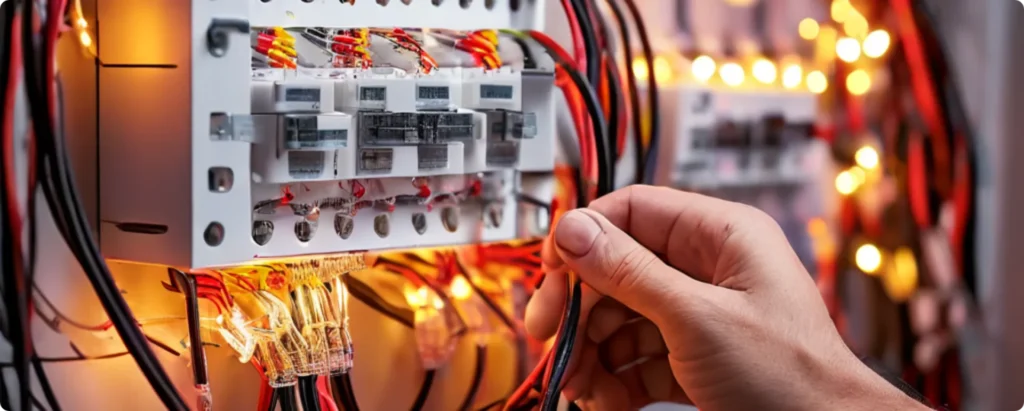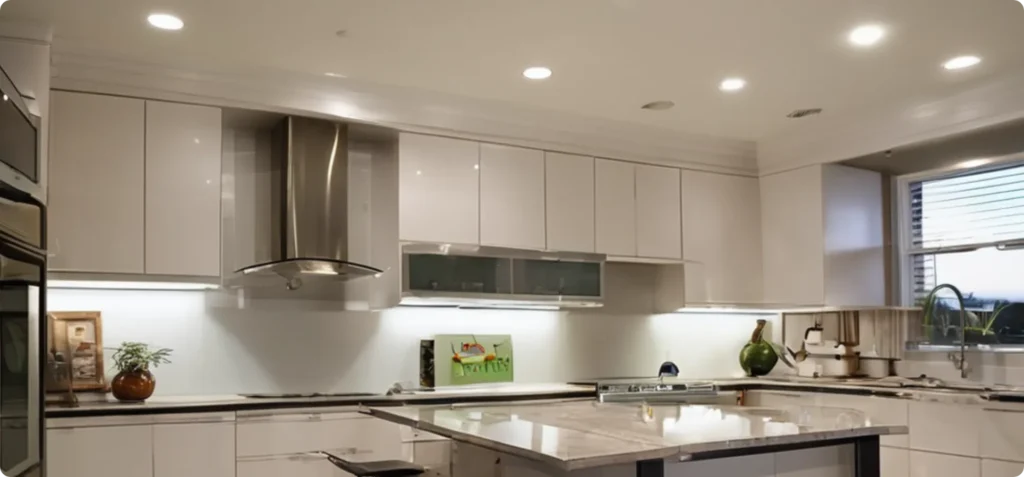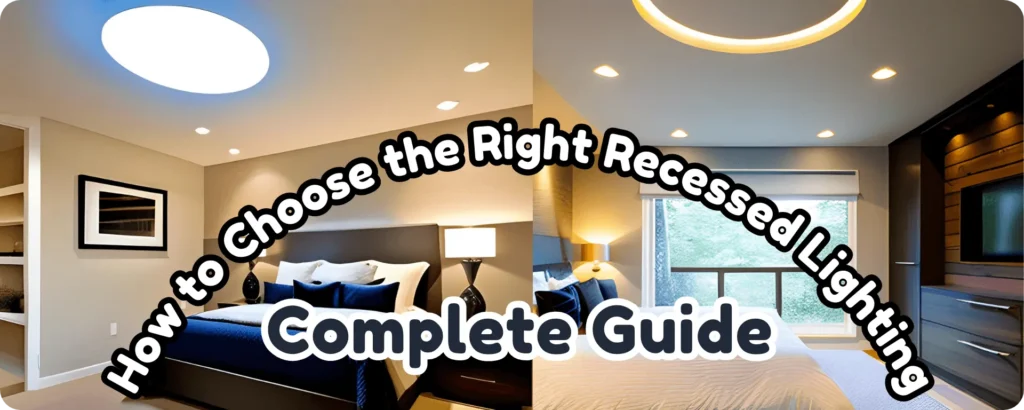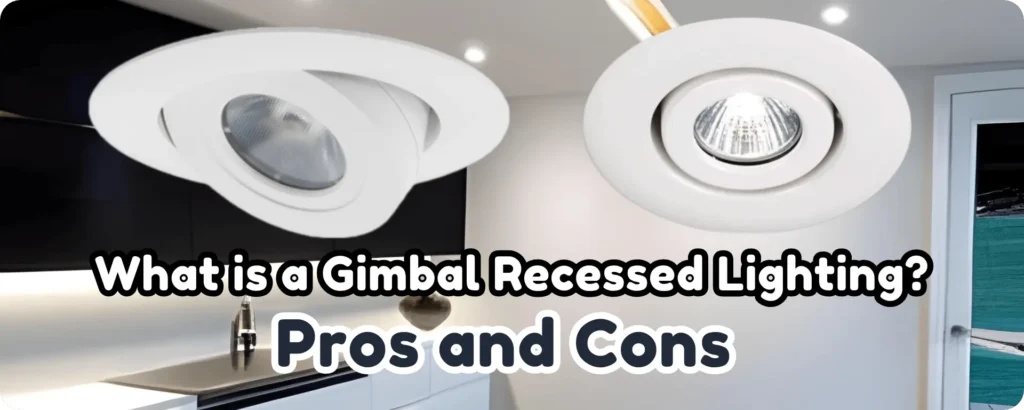

The LED recessed lights are a common choice for modern homes because of their energy efficiency and sleek design. However, flickering is an irritating problem that can indicate some underlying electrical difficulties. This guide will take you through the steps to identify and fix flickering LED recessed lights, giving you a continuous and dependable light source in your home.
Understanding LED Flickering
The LED recessed lights flickering can result from various factors such as electrical issues, incompatible components, or poor-quality products. Once you determine the exact cause, you can respond better to the trouble.
Common Signs of Flickering
Flickering may present itself in various ways:
- Intermittent or constant flashing
- Dimming and brightening without user intervention
- Strobe-like effects when lights are dimmed
Common Causes of Flickering LED Recessed Lights


Let us first understand what causes those flickers in LED recessed lights. You will be able to handle it more effectively once you establish the cause. Consider these common causes:
Loose or Faulty Wiring
Some flickers occur when there is no good contact between loose bulbs and sockets. Screw these led bulbs to their respective sockets firmly to eliminate any flicker problems. Wiring connections may be loose or disconnected causing flickering. Check the wiring connections and tighten them if they are loose.
Incompatible Dimmer Switches
For the proper functioning of LEDs, a dimmer switch compatible with them should be used. Traditional dimmers for incandescent bulbs may not work with LED lights. That causes them to flicker incessantly. An upgrade for an LED-compatible dimmer switch often solves this problem most of the time.
Voltage Fluctuations
Voltage fluctuations affect LED lights. Inconsistent power supply, causing voltage drops and surges, in your house can cause flickering. Voltage stabilizers may be installed or an electrician called to handle the issue of fluctuating voltages.
Defective LED Bulbs
Sometimes, the LED bulbs themselves can be faulty. This is especially true for low-quality or old bulbs.
Poor Quality LED Drivers
LED drivers regulate the power of the LED. A poor-quality driver can fail to maintain a steady current, causing flickering.
How to Fix Loose or Faulty Wiring


If you suspect loose or faulty wiring, follow these steps:
Steps to Check for Loose Connections
- Switch off the current supply to the light fixture at the circuit breaker.
- Remove the fixture and check the wiring connections.
- Look for any loose or corroded wires.
How to Safely Tighten Connections
- Use a screwdriver to fix or tighten all loose wire nuts.
- If wires are corroded, cut and strip their ends before reconnecting.
- Make sure all connections are secure before restoring power.
When to Call a Professional
If you are uneasy about electrical wiring or if this problem persists, it is better to call a qualified electrician.
Addressing Incompatible Dimmer Switches
Dimmer switches are important for controlling LED lights. However, not all dimmers work with LEDs.
Understanding Dimmer Compatibility
LED-compatible dimmers have been designed to handle LEDs’ lower wattage and electrical characteristics.
Replacing Incompatible Dimmers
- Turn off the power at the circuit breaker.
- Remove the existing dimmer switch.
- Install a new, LED-compatible dimmer switch following the manufacturer’s instructions.
Recommended Dimmer Switches for LEDs
Look for dimmers specifically labeled as LED-compatible. Popular brands like Lutron and Leviton offer reliable options.
Dealing with Voltage Fluctuations
Voltage fluctuations can cause flickering. Here’s how to identify and fix this issue:
Identifying Voltage Issues
The voltage of a light fixture can be tested using a multimeter and this is important because the presence of fluctuations beyond the standard range may indicate that there is a problem.
Solutions for Stabilizing Voltage
- Verify that the electrical system in your house has been correctly grounded.
- Do not use too many high-wattage gadgets on circuits.
- If you are experiencing constant fluctuation problems, think about installing voltage stabilizers.
When to Consult an Electrician
If your home still experiences fluctuations in current, then it would be recommended to consult an electrician to look at related issues with your electrical installation.
Replacing Defective LED Bulbs
Sometimes, the issue lies with the bulbs themselves.
Signs of a Defective LED Bulb
- Frequent flickering
- Dim spots on the bulb
- Complete failure of the bulb
Choosing High-Quality Replacements
Invest in high-quality LED bulbs from reputable brands. Look for bulbs with good reviews and warranties.
Proper Installation of New Bulbs
Ensure the new bulb is compatible with your fixture and install it securely to avoid loose connections.
Upgrading LED Drivers
The LED driver is crucial for maintaining a steady current.
Role of LED Drivers in Preventing Flickering
A high-quality LED driver ensures a consistent power supply, preventing flickering.
Selecting Reliable LED Drivers
Choose drivers that match the specifications of your LED bulbs and fixtures. Reliable brands include Mean Well and Philips.
Installation Tips for New Drivers
- Turn off the power at the circuit breaker.
- Follow the manufacturer’s instructions for connecting the new driver.
- Ensure all connections are secure before restoring power.
Preventive Measures to Avoid Flickering


Taking proactive steps can help prevent future flickering issues.
Regular Maintenance Tips
- Check connections periodically.
- Replace old or defective bulbs promptly.
- Ensure dimmer switches and drivers are compatible with your LEDs.
Ensuring Compatible Components
Always use components designed to work together, such as compatible bulbs, drivers, and dimmers.
Importance of Quality Fixtures
Invest in high-quality fixtures and components to minimize the risk of flickering and other issues.
DIY vs Professional Help
Deciding whether to tackle the issue yourself or call a professional depends on the complexity of the problem.
When DIY is Appropriate
Homeowners can often do simple tasks like replacing bulbs or tightening connections.
Scenarios Requiring Professional Intervention
A licensed electrician should handle complex issues like wiring problems or persistent voltage fluctuations.
Cost Considerations
Although it might be more costly, professional support guarantees a safe and right job done that may save some money in the long run.
Safety Precautions
Always prioritize safety when dealing with electrical issues.
Importance of Safety When Handling Electrical Issues
Improper handling of electrical components can lead to shocks, fires, or other hazards.
Basic Safety Tips for Troubleshooting and Repairs
- Always turn off the power before starting any work.
- Use insulated tools.
- Wear rubber-soled shoes and avoid wet conditions.
Conclusion
When dealing with flickering LED recessed lights it’s important to address its root cause appropriately. Loose connections, incompatible dimmer switches, or faulty bulbs; following these steps will help you bring your lighting back to normal. In case of any doubt, seek professional assistance to ensure both safety and effectiveness as a measure of prudence.
FAQs
What if my LED lights are still flickering after troubleshooting?
If these all methods fail to halt the flickering, then it may be wise of you to call for professional help from an electrician. This could suggest that there is some hidden electrical problem that requires your attention.
Can flickering lights cause damage to my home?
Flickering alone does not lead to any subsequent damage although it is a sign of an electrical issue and this can be dangerous. It’s better if I get this resolved to avoid possible threats like electric fire.
Are there specific brands of LEDs that are less likely to flicker?
Yes, certain manufacturers are famous for their reputable products. Some of the highly recommended brands that are known for consistently performing well and having fewer chances of flickering include Cree, Philips, and Sylvania.
Can I use any dimmer switch with LED recessed lights?
Certainly, not all types of dimmer switches will work with LED bulbs. It is important to make sure that you use a dimmer switch specifically designed for LED lights to prevent blinking lights and others.






